All About Suffix -S and -ES: Plus Free Worksheet!
This post may contain affiliate links. As an Amazon affiliate, we earn from qualifying purchases.
Teaching students about adding suffix -s or suffix -es to base words is the best way to introduce your students to morphology! Learn more and download a free worksheet for students to practice differentiating the sounds of these common suffixes!
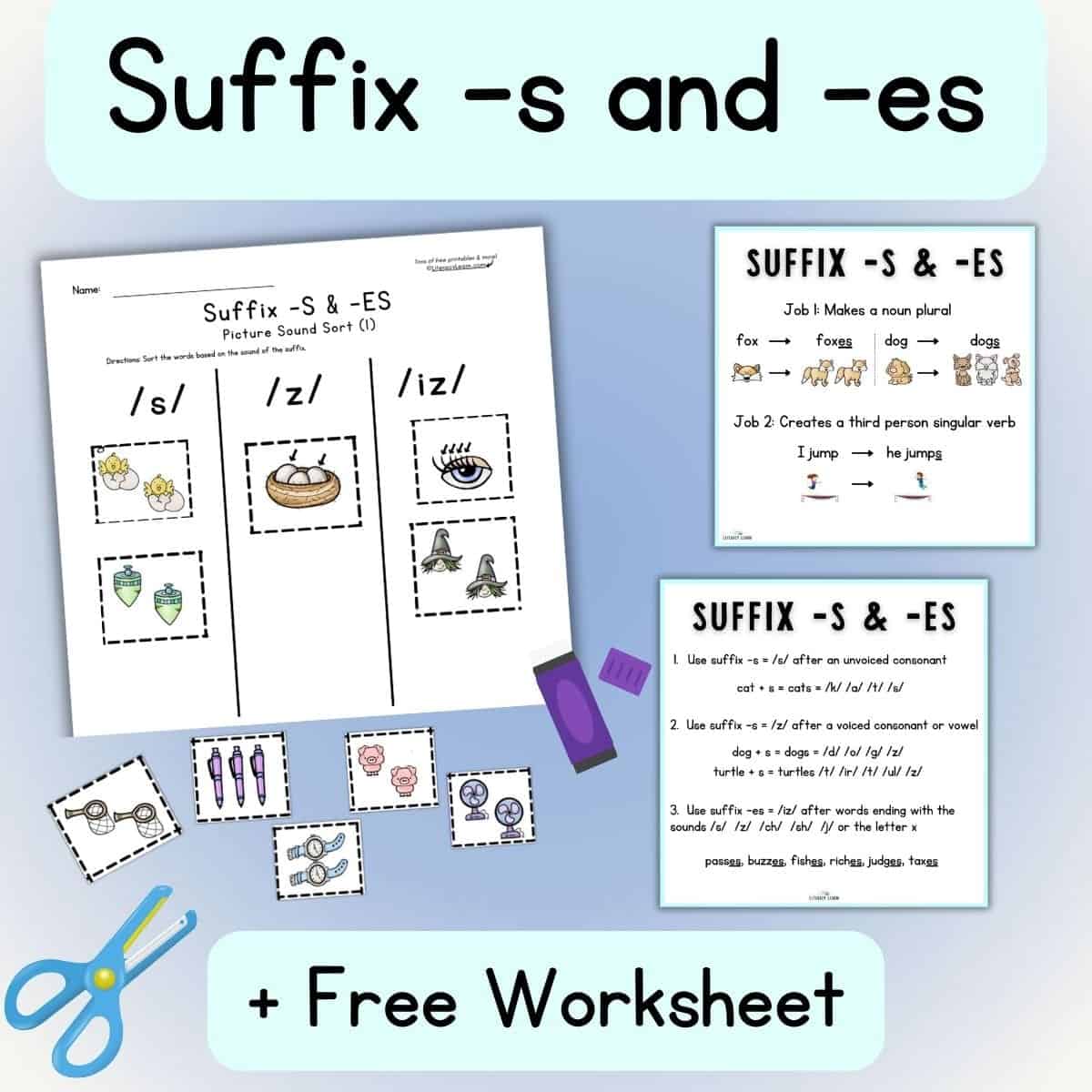
All About Suffix -S and -ES
First, let’s begin with defining the term suffix. A suffix is a is a meaningful word part (morpheme) added to the end of a base word which changes the meaning in some way.
Common suffixes include -s, -es, -ing, and -ed.
Remember, suffixes cannot stand alone. Suffixes must be attached to the end of a base word.
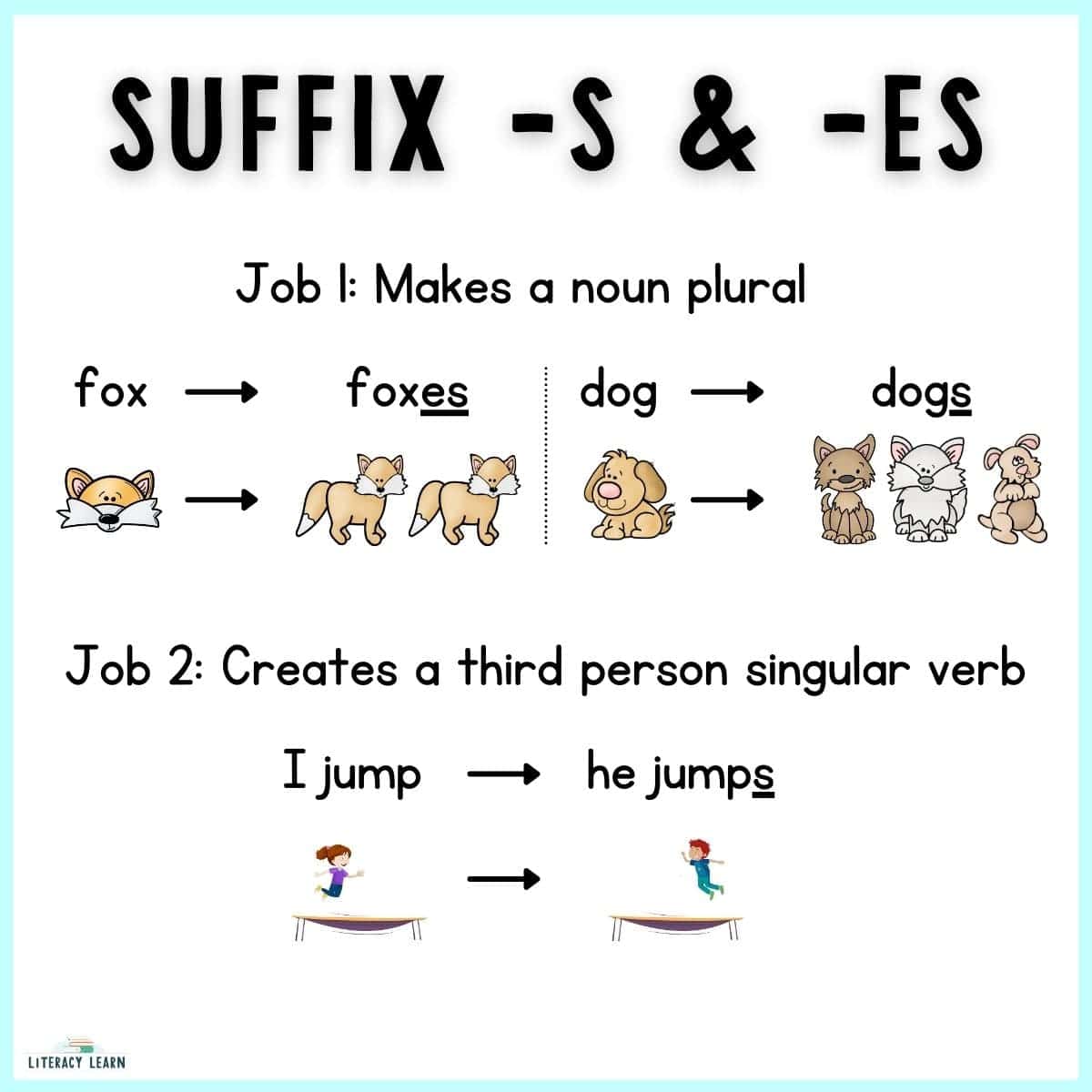
What Do Suffix -S and -ES Mean?
The suffix -s and -es function the same because they have the SAME meaning.
Most people know that adding the suffix -s or -es makes a word plural (more than one). But, did you know that these suffixes have another meaning too?
We like to refer to them as the “jobs” of suffix -s and -es.
👉 Job 1: When suffix -s or -es is added to a noun, it changes the noun from singular to plural (e.g. dog ➡ dogs).
👉 Job 2: When suffix -s or -es is added to a verb, it indicates that it’s third person singular (e.g. I eat ➡ he eats).
When to Use Suffix -S and -ES
So if you want to make a noun plural, or if we want to show a verb is third person singular, how do we know what suffix to use? Is it -s or -es? Well, there’s a rule for that!
📏 Rule: When the base word ends with the “hissing” sounds /s/, /z/, /sh/, /ch/, or the letter x, the suffix -es is added. If the base word ends in any other letter, the suffix -s is added.
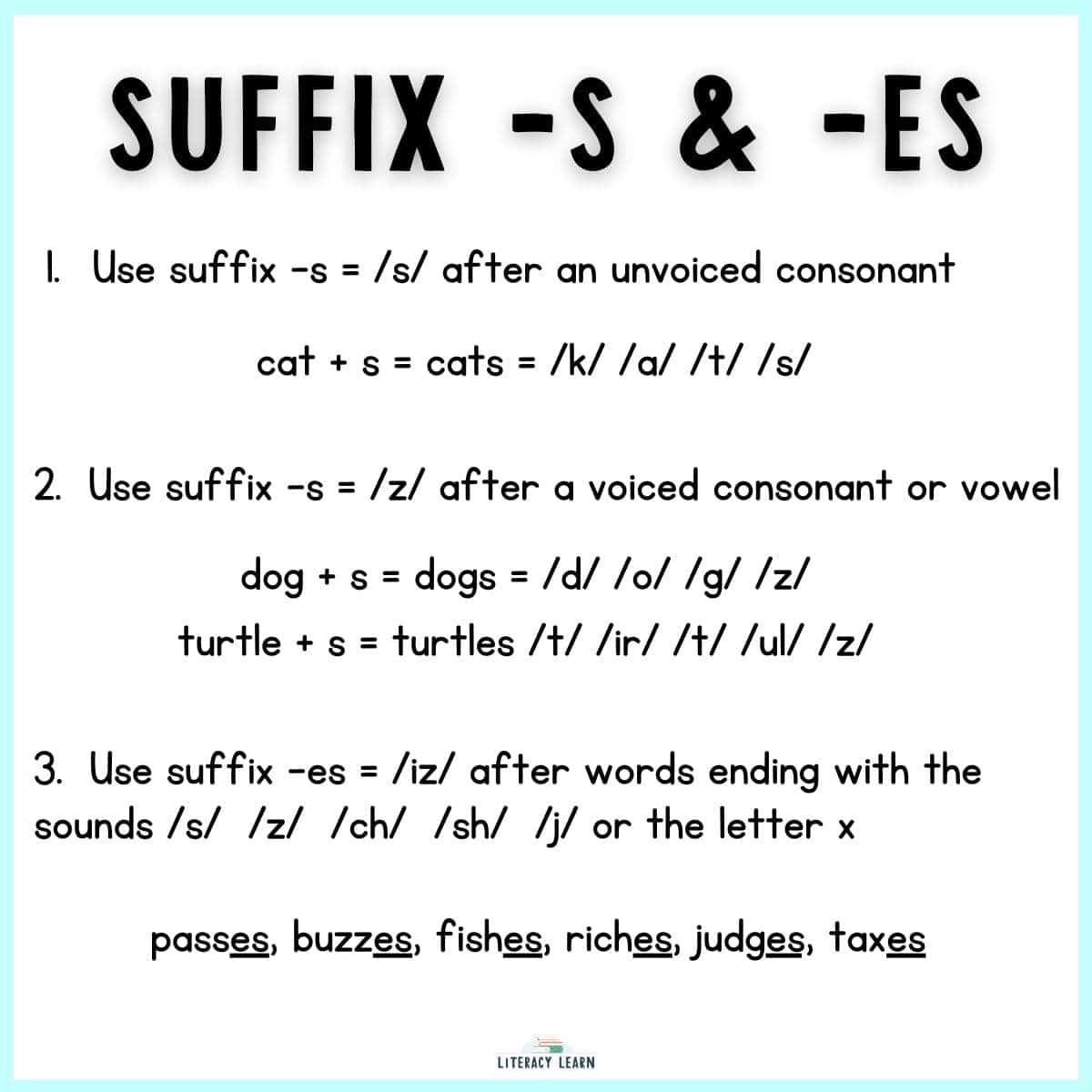
There really isn’t a great way to remember this rule, and it’s too much on a child’s cognitive load to explicitly memorize what sounds the base words need to end with.
Instead, it is best to teach kids about sound and syllable awareness to help with the spelling of suffix -es.
Try this with your students. 👉 For words ending with s, z, sh, ch, or the letter x, try adding the sound /s/ right afterward: fishs, richs, foxs bosss, buzzs. It just doesn’t work!
The final sound in the base word makes it impossible to hear the /s/ right after it. Adding /s/ makes it sound like a “hissing sound” because the sounds simply blend together and you can’t distinguish if there is a suffix at the end of the word.
But, when we adjust and add suffix -es, it creates a new syllable! Listen for the second syllable in these words: fish/es, rich/es, fox/es.
This means that one-syllable base words will become two syllables, because adding suffix -es adds a new syllable to the word.
So if we hear two syllables when we say the word, we need to add -es.
The Sounds of Suffix -S and -ES
Suffix -s can represent two different sounds. In some words, it’s pronounced /s/ like the letter s. In other words, it’s pronounced /z/ like the letter z.
📏 Rule: Suffix -s says /s/ after an unvoiced consonant sound. Suffix -s says /z/ after a voiced sound.
Suffix -es will always represent the same sound when added to any word. It sounds like /iz/. The letter e represents /ĭ/ and you hear the schwa sound in this syllable. The letter S represents the /z/ sound. Together, the suffix -es always sounds like /iz/.
After you’ve taught this, add grapheme cards for suffix -s under the /s/ and /z/ phonemes on your sound wall! Read and learn more about phonemes, graphemes, and morphemes!
Teaching Info
The concept of suffix -s and -es should be one of the first morphology concepts taught to students.
Once kids can read closed syllable words with relative ease and accuracy, introduce suffix -s and -es.
Kids as young as kindergarten can easily understand how the suffix -s changes the meaning of the word! Using a word sum is a great way to visually show this:
dog + s = dogs
With kids in first grade and above, you can really go into detail and explain the other job as well as the different sounds suffix -s and -es can represent.
Related Resources
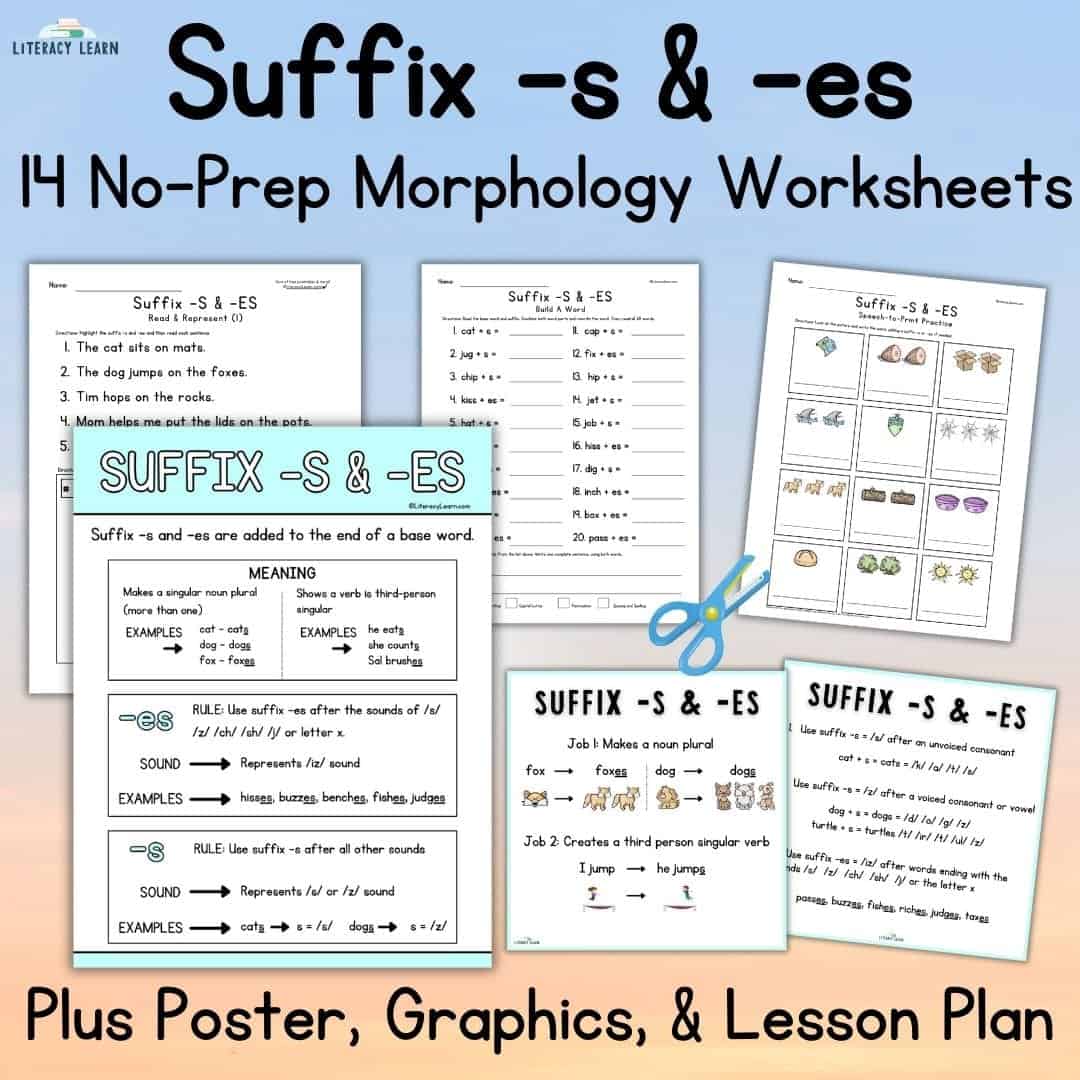
If you aren’t sure how to teach suffix -s and -es, you’ll want to grab our popular suffix product from our TPT store. Included is a teacher cheat sheet and a step-by-step lesson plan to teach you everything you need to know and get you started.
You can also grab some free morphology printables, which includes common prefixes, suffixes, and bases. Visit our other posts to read more about morphology!
Using the Worksheet
We’re sharing a FREE sort by sound worksheet to help kids understand the sounds of suffix -s and -es and practice hearing the sounds in words.
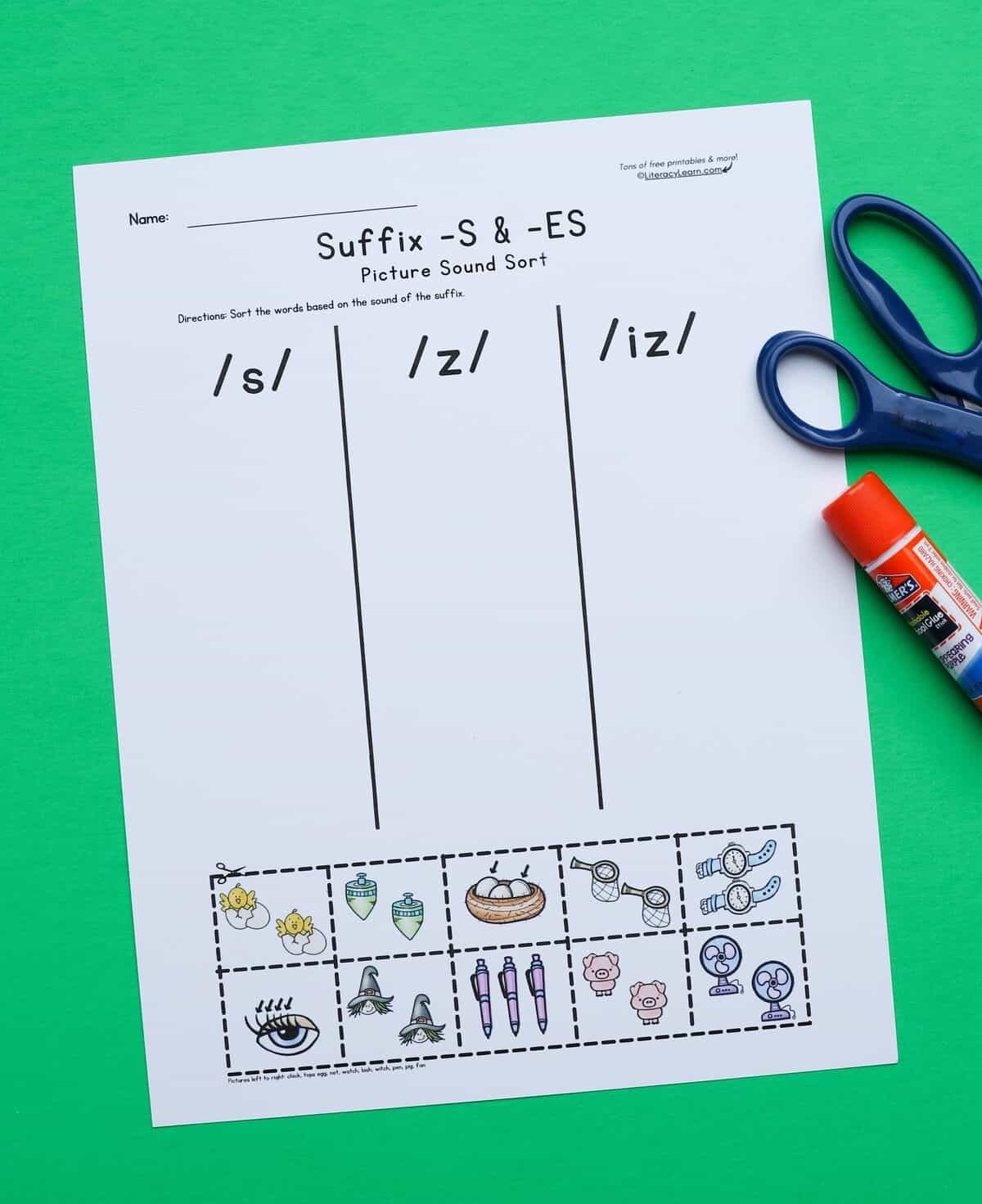
This resource is designed using a speech-to-print format. Kids will look at the pictures and listen for the sound they hear at the end of the word.
Then, they will cut, sort, and paste the pictures under the appropriate sound. For children who have learned digraphs and trigraphs, you can challenge them to try spelling the words, using the correct suffix.
Download & Print
DOWNLOAD TERMS: All of our resources and printables are designed for personal use only in homes and classrooms. Each teacher must download his or her own copy. You may not: Save our files to a shared drive, reproduce our resources on the web, or make photocopies for anyone besides your own students. To share with others, please use the social share links provided or distribute the link to the blog post so others can download their own copies. Your support in this allows us to keep making free resources for everyone! Please see our Creative Credits page for information about the licensed clipart we use. If you have any questions or concerns regarding our terms, please email us. Thank you!


